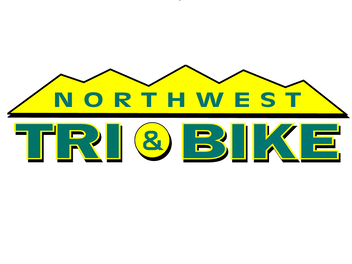Here at Raise the Bar, we value your safety. Here are some good safety points that will keep all of our members safe.
Biking SafetyMaintain Control of Your Bicycle : There are many things you can do to control your bicycle, even in an emergency. First, ensure your bicycle is the right size and properly adjusted to fit you. A properly fitted bicycle is easier to control, more comfortable, and causes less fatigue. A bicycle shop can help you choose the correct size bicycle. Ensure your bicycle is in good working order by inspecting it regularly. Protect Yourself : Even a simple fall can cause a life threatening head injury. The brain is fragile and often does not heal the way that broken bones can. The damage can stay with you for life. Helmets provide protection.
Wear your helmet correctly. Be Alert: Even if you obey all traffic laws, there is always a risk of being hit by a motorist who is not obeying the laws, or who simply does not see you. Ride carefully—Vehicles waiting at stop signs, in driveways, or parking spaces may suddenly pull out in front of you. Watch for vehicles that have just passed you and may turn right, as well as vehicles across the street that may turn left in front of you. Be prepared to stop or take evasive action. Signal before making turns or changing lanes to warn traffic around you. To signal a left turn, look behind you, over your left shoulder, and then extend your left arm out. To signal a right turn, hold your left arm up with your elbow bent (you may also hold your right arm straight and point to the right). You do not have to keep your arm extended while completing the maneuver—Always have at least one hand on the handlebars to maintain control. To signal that you are slowing or stopping, extend your left arm down. Be Visible: Increase your visibility by wearing light or bright colored clothes. Always look over your shoulder to make sure the lane is clear before turning or changing lanes. Make sure your brakes are in good working order. Group Riding: Do not impede traffic. It is safest to ride single file. When possible, alert other riders of potentially dangerous conditions (e.g., dogs, potholes, approaching cars, etc.). If there is a significant obstacle (like a branch or hole that could cause a crash), it is not enough to simply call it. The lead rider should move the group well away from the hazard. Riders should signal stops and turns, either verbally or by hand. Hand signals should be used to signal a rider’s (or the group’s) movements to motorists. Never say “Clear” to other riders approaching an intersection. Each rider must make his or her own decision and learn not to be dependent on the judgment of others, as it may be faulty or conditions may suddenly change. Use discretion in calling "car back." We know there will be cars back there. Reserve the call for when there is some significance or the group needs to actually do something about it (ie: the lead rider is planning to come off the pull, someone is hanging outside the pace line, or a motorist is attempting to pass unsafely). In a narrow lane, do not move to the edge of the road when a car approaches behind. Hold your line, they can pass when the oncoming lane is clear. Ride With Traffic: Ride in the same direction as the traffic. This will make you more visible to drivers entering roads or changing lanes because they will know where to look for possible conflicts. On a one-way street, you may ride on the left as long as you are riding with traffic. How Far to the Right? Ride on the right, but not so far that you might hit the curb. You could lose your balance and fall into traffic. Do not ride too far to the right: When avoiding parked vehicles or road hazards. When a traffic lane is too narrow for a bicycle and vehicle to travel safely side by side. When making a left turn so that vehicles going straight do not collide into you. To avoid conflicts with right-turning vehicles. Hazards: Keep your eyes on the road ahead. Avoid running over potholes, gravel, broken glass, drainage grates, puddles you can’t see through, or other unsafe road conditions. Look over your shoulder to avoid swerving suddenly into traffic. When possible, signal before changing lanes. Bicyclists should ride far enough away from parked vehicles to avoid being hit by an opening door. Obey Traffic Signs and Signals: Bicyclists must obey STOP signs and red signal lights. It’s a good idea to stop for yellow lights too—rushing through a yellow light may not leave you enough time to make it across the intersection before the light changes. Left Turns : As you approach the intersection, look over your left shoulder for traffic. If clear, signal your turn and move over to the left side of the lane, or into the left or center turn lane. Position yourself so that vehicles going straight cannot pass you on your left while you are making your left hand turn. Yield to oncoming traffic before turning. If you are riding in a bicycle lane, or on a multi-lane road, you need to look and signal each time you change lanes. Never make a left turn from the right side of the road, even if you’re in a bicycle lane. |
Run Safety• Identification: Always carry or wear identification in the event of an emergency. Should you be unconscious, you will want your rescuers to know who you are and how to reach your emergency contact(s). Also include your blood type.
• Headphones: While you may enjoy listening to music while you run, headphones can be quite dangerous since they limit your ability to hear what is going on in your surroundings. For instance, if you are blaring music into your ears, you might not hear the squealing tires closing in on you or someone coming up behind you. • Run facing traffic and Obey Traffic Laws: If running alongside a road, always run facing traffic so you can see oncoming vehicles in the lane closest to you. • Be considerate of cars and/or other pedestrians: Never run no more than two abreast when you are with a group. Do not force other runners, pedestrians, or cyclists off of the path. If you are in a particularly busy area, run single file. Never stop suddenly in the middle of a path or during a race. Always look around you before entering or exiting a path, at intersections, at drinking fountains and at hydration stations in races. • Plan your routes: Always know your route and be familiar with the territory. If you are planning to run down a long stretch of road, go for a drive first and make sure there is plenty of room on the shoulder or sidewalk for you to run safely. • Let your friends/spouse know your route and/or Run with a buddy: If you are going out for a run, let your spouse, roommate, or friends know where you will be running and roughly what time you expect to be home. That way, should something happen to you, someone will know to look for you if you are late and know where to look. • Be safe at night: Always run in lighted areas when running at night. It is generally safer to run with a partner when running at night. Wear bright, reflective clothing so drivers of vehicles can easily see you. • Be prepared for the weather: Stay well-hydrated, especially in hot weather. Also when it is hot, consider scaling back your mileage and pace. Try to run at cooler times of day like early morning. Make sure you bring enough fluids with you. In cool weather, dress appropriately and watch for slippery surfaces. |

